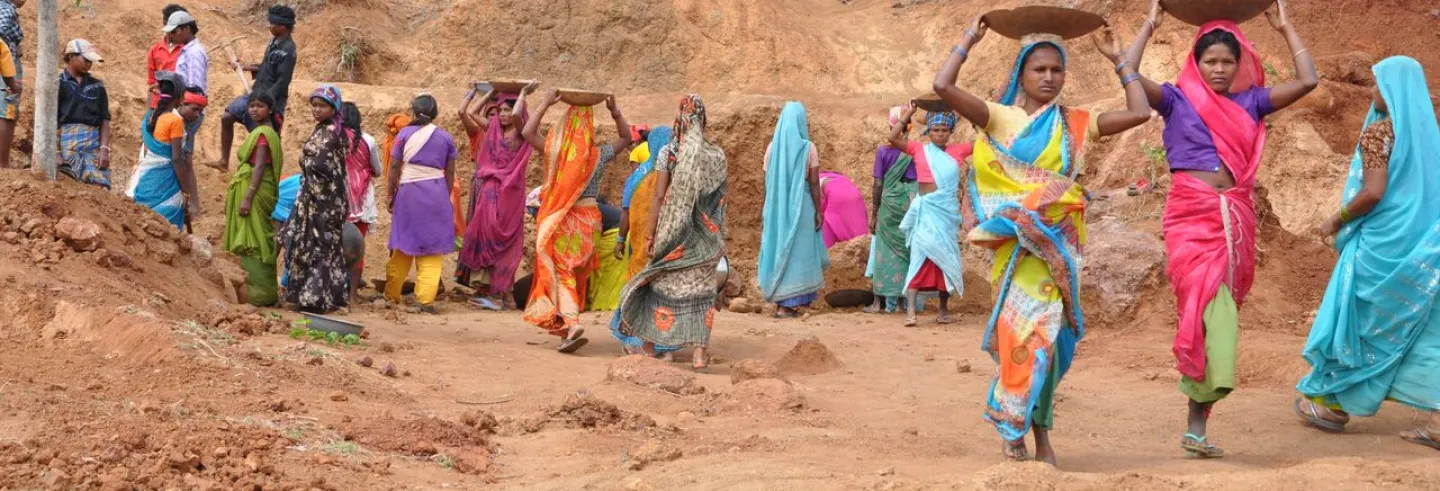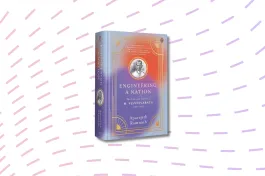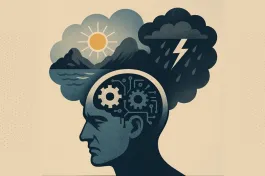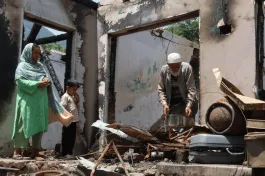We know now that the Indian economy is in the midst of a slowdown; GDP growth has been steadily deteriorating since 2017-18. Data from the Periodic Labour Force Survey of 2017-18 showed that unemployment was at a four-decade high that year and over 17% of rural men in the 15-29 age group were unemployed, triple the number in 2011-12 (Bera, 2019).
There is ample evidence today that demonetisation in late 2016 resulted in a decline in incomes, an extended slump in domestic agricultural trade and high levels of informal debt (Chodorow-Reich, et al 2019; Wadhwa, 2019; Aggrawal and Narayanan, 2019 to name a few).
While academic evidence on the impact of the Goods and Services Tax (GST) is more limited, there is a sense that its implementation undermined the condition of those working in small and medium enterprises. International organisations too have attributed slow growth to the cut back of spending and disappointing tax collections after GST. By many accounts, growth rates in wages have decelerated somewhat in the past five years, with the growth in the construction wages reportedly decreasing (Himanshu 2017).
The impact on common people’s lives because of all these developments must have been severe. Even before the slowdown set in, consumption levels had fallen. 1 Subramanian (2019) shows that over 2011-12 to 2017-18, each of several welfare indicators has declined: average per capita consumption expenditure; average per capita expenditure on food, the quintile expenditure statistic (the average expenditure of the poorest 20% of a population); the average income of the below-median population; and Sen’s Welfare Index and so on. Recent data leaked from the National Sample Survey (NSS) on household consumption expenditure in 2017-18 (a report that was officially not released and has since been scrapped) records a significant 9% drop in rural expenditure, including on staples, between 2011-12 and 2017-18. This is the first time in half a century, since the early 1970s, that consumption has shown a fall. Food expenditures in the bottom decile declined by 9.8%, a disturbing finding from the perspective of nutrition (Subramanian, 2019). For those of us who have had the chance to interact with the people who struggle at the margin, these data seem to reflect their experience faithfully. Field accounts of hunger in fact suggest it might be worse than the data suggest (Bera, 2019, for example).
[I]n the Mahatma Gandhi National Rural Employment Guarantee Act, the Government has a potentially effective, even essential, instrument to address the current economic emergency in rural areas.
Unfortunately, at a time when the economic predicament of the poor is more precarious than it has been in a long time, access to a number of social protection programmes have been severely undermined , in large part due to the linking of Aadhar (See Khera, 2017; Muralidharan, et al., 2019 for the disruptive impact of Aadhar).
If the Union Budgets of 2019-20 and 2020-21 are anything to go by, it appears that the Government is chipping away at the architecture of social policy in India, on the one hand via restricting allocations and, on the other, through the dilution of social protection schemes, even those that form part of the National Food Security Act.
There is broad consensus that the bad times are not going away any time soon. Among the many suggestions that have been made recently to boost the economy is that the government focus on rural revival (Kotwal and Sen, 2019, for instance). This prescription is deeply appropriate. In this article, I argue that in the Mahatma Gandhi National Rural Employment Guarantee Act (MGNREGA), the Government has a potentially effective, even essential, instrument to address the current economic emergency in rural areas, even if it might be insufficient as a stand-alone intervention. I first describe the programme and then present a justification for MGNREGA’s deep relevance today.
What is the MGNREGA?
MGNREGA as a programme was rolled out in three phases. Introduced in 200 rural districts in its first phase (2 February 2006), in its second phase, 2007-08, it was extended to an additional 130 rural districts. The remaining districts were notified under MGNREGA with effect from 1 April 2008. Effectively, this is the 15th year of its operation, and currently the programme operates in 691 districts in the country. The National Rural Employment Guarantee Act (NREGA), 2005, states in its preamble that its goal is
to provide for the enhancement of livelihood security of the households in rural areas of the country by providing at least one hundred days of guaranteed wage employment in every financial year to every household whose adult members volunteer to do unskilled manual work and for matters connected therewith or incidental thereto. (pg. 1 Government of India, 2005).
In practical terms, a household obtains a job card issued by the local administration — the Gram Panchayat — listing all adult members in the household who are eligible to work. A person wanting work applies for such work in writing, with the understanding that such work would be provided within 15 days and within 5 km of the village. Should the work be located beyond the mandated 5 km, the worker is eligible for travel costs. Each household is entitled to 100 days per year so that the allocation of who works how much from the household and when is left to the household. Workers are assigned to specific projects, drawn from a shelf of such works, which are decided, in principle, primarily by the Gram Sabha, each accompanied by an appropriate technical design, cost and labour days estimates. The works usually involve unskilled manual labour, with limited use of machines.
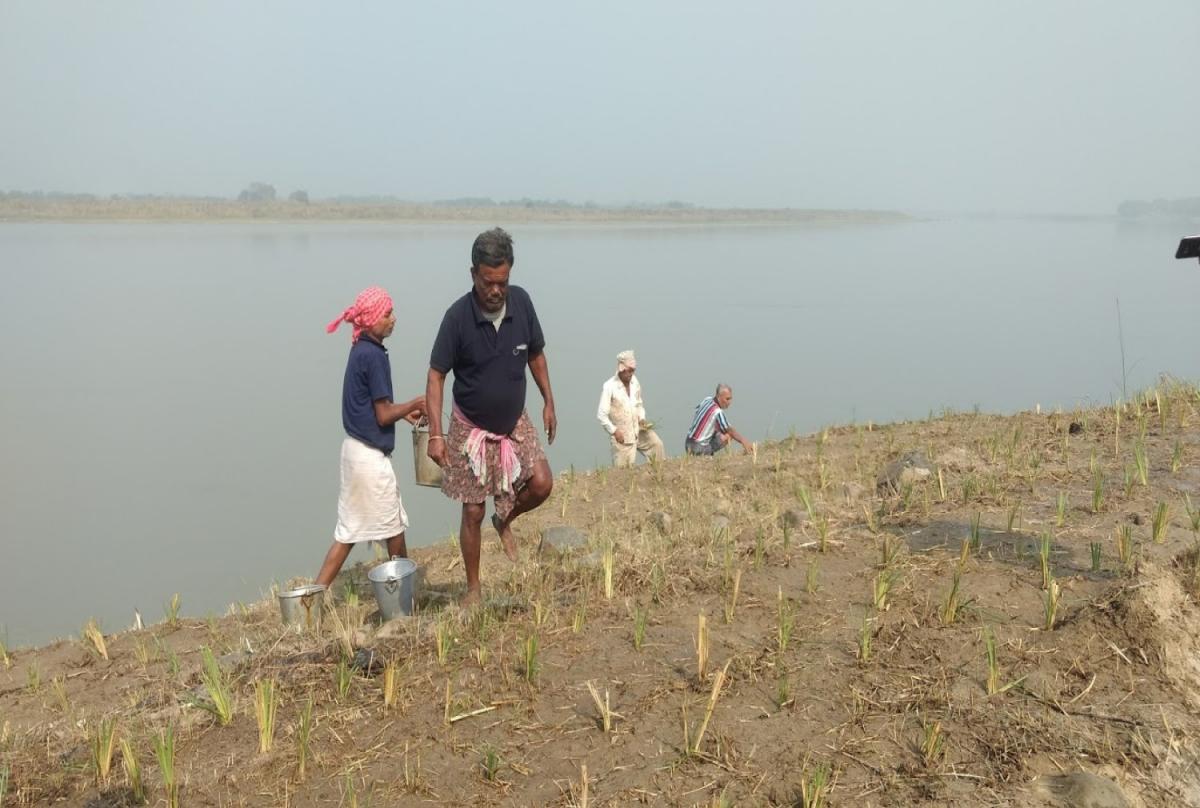
MGNREGA allows for a 60:40 ratio of wage and material costs to be maintained ideally at the panchayat level. In principle, work is measured each day and payment is made weekly, according to the appropriate Schedule of Rates for different types of work in different conditions. Wages are supposed to be paid within a fortnight. Since 2009, with a few exceptions, these payments are directed to an individual worker’s account. The failure on the part of the state to either allocate work within 15 days of demanding it or pay wages on time entitles the worker to compensation, that is a fraction of the wages (Government of India, 2019).
Even when MGNREGA was introduced, it was neither new nor revolutionary. It has antecedents within India and shares several features with other programmes elsewhere in the world. Even as early as the in the 1960s, for example, the Third Five Year Plan (1961-66) referenced the need to provide 100 days of employment. 2 See Chapter 23, Point 12, http://planningcommission.nic.in/plans/planrel/fiveyr/3rd/3planch23.html. In 1972, in response to a serious drought, Maharashtra put in place an Employment Guarantee Scheme (EGS), that in fact offered the inspiration and learning for MGNREGA. Indian social protection programmes have also included workfare programmes, without the guarantee, such as the Food for Work Programme. In fact, when NREGA was notified on 7 September 2005, it merged the then on-going schemes of the Jawahar Gram Samridhi Yojana (JGSY), Employment Assurance Scheme (EAS) and Sampoorna Grameen Rojgar Yojana (SGRY).
MGNREGA explicitly aimed to create durable assets including drought-proofing and flood management, and aid in the empowerment of the marginalised.
MGNREGA was, however, different from most of its predecessors in several key respects. The primary goal was social protection for the most vulnerable people living in rural India through providing employment opportunities. MGNREGA explicitly aimed to create durable assets including drought-proofing and flood management, and aid in the empowerment of the marginalised. 3 The complete set of objectives are as follows: Ensuring social protection for the most vulnerable people living in rural India through providing employment opportunities, Ensuring livelihood security for the poor through creation of durable assets, improved water security, soil conservation and higher land productivity, Strengthening drought-proofing and flood management in rural India, Aiding in the empowerment of the marginalised communities, especially women, Scheduled Castes (SCs) and Scheduled Tribes (STs), through the processes of a rights-based legislation, Strengthening decentralised, participatory planning through convergence of various anti-poverty and livelihoods initiatives, Deepening democracy at the grass-roots by strengthening the Panchayati Raj Institutions (PRIs). Effecting greater transparency and accountability in governance. The programme also aimed to strengthen decentralised, participatory planning and panchayati raj institutions (PRIs) for deepening democracy at the grassroots, while fostering greater transparency and accountability in governance. Thus, while it adopted a demand-driven approach with a guarantee as with Maharashtra’s EGS, it included several additional components meant to strengthen entitlements, ensure transparency and promote an explicitly bottom-up approach.
Gram Panchayats (GPs), for example, were accorded an active role. At least 50% of the works in terms of cost would be implemented by the GP. The shelf of works was to be decided at the Gram Sabha in order to reflect the priorities of the community. Locally, a team of functionaries included the Gram Rozgar Sahayak / Field Assistant, a Technical Assistant to measure the work, and a Computer Assistant to maintain records offered support for the implementation of the programme.
In terms of transparency too, MGNREGA surpassed the programmes it replaced. Programme websites provide real time data on a large number of parameters associated with implementation. Assets created have since been geo-tagged with before- after pictures and so on. Perhaps uniquely, the programme built in provisions for twice a year social audits, where people audit the programme. These involve public verification of muster rolls and other expenditure in a Gram Sabha, and can involve workers as well as civil society organisations. This allows not just an important feedback and accountability mechanism but also provides a platform for civil society to engage with the programme.
It is easy to see that MGNREGA is complex, designed to achieve a number of goals at once, demanding close coordination across departments and layers of administration. All this while also attempting to build in robust and durable accountability structures. Successful implementation of MGNREGA depends crucially on staff capacity at various levels. Thus, although the programme has a national character, it varies substantially across states in the effectiveness of implementation. States also have innovated in different ways, drawing on the Act but framing their own rules beyond the legislation. They have built different structures for its administration and coped with political pressures differently, so that it is hard to speak of MGNREGA as a monolithic programme. Likewise, MGNREGA has not been static over time. It has been evolving as a programme, not always necessarily for the better.
Although there is a substantial literature and much commentary on these issues, this article focusses more on the impacts, noting merely the heterogeneity across states and that in many states the implementation of the programmes leaves a lot to be desired.
Right from its inception, many economists and commentators turned into fanatic critics of MGNREGA, rarely missing an opportunity to criticise not just the programme but also its advocates.
MGNREGA is a large programme as most programmes in India tend to be. As of January 2, 2020, it has enabled the generation of 29.88 billion person days of work at a total cost of Rs.5633 billion (2018-19) at the cost of Rs.189.5/person day. Despite the scale, however, expenditure on MGNREGA has never exceeded an annual 0.4 % of the GDP since inception and has usually hovered around 0.33%. Similarly, although a quarter of all rural households worked for at least one day on MGNREGA in 2011-12, at no time in its short history has it accounted for significantly more than 3% of total rural employment (Chand, 2015), far from the Wall Street Journal’s claim that the programme was “wrecking the national labour market”.
Right from its inception, many economists and commentators turned into fanatic critics of MGNREGA, rarely missing an opportunity to criticise not just the programme but also its advocates. The programme earned colourful epithets – “gravy train”, “playing with mud“, “digging holes” and so on, its advocates dismissed as well-meaning “jholawalas” who did not know better (Drèze, 2019). In 2009, the World Bank in its flagship World Development Report, called MGNREGA a “barrier to development” (World Bank, 2009). While there were those who dismissed the programme completely, others questioned its design and continuing relevance. By 2014, for example, some economists were asking: Do we still need MGNREGA? Surely, there must come a time when it is no longer needed?
In 2014, the new Government made it clear it intended to phase out the programme. It was proposed, for example, that MGNREGA be restricted to 200 poor districts, on the premise that the programme was not needed elsewhere. There was a proposal as well to alter the ratio of machine and labour use from 40:60 to 49:51 maintained at the district level, and to mandate that 60% of the cost of projects be directed to support agriculture, though this was already the case. The effort to roll back MGNREGA was however halted in its tracks, in part due to the entreaties of the ruling party’s Chief Ministers, who had run the programme with considerable success in their respective states. The Prime Minister therefore continued the programme, proclaiming to the Opposition in Parliament that MGNREGA would continue "… as a living monument to your failure to tackle poverty in 60 years. With song and dance and drum beat, I will continue with the scheme." (PTI News, February 1, 2016). More recently, in July 2019, the Union Rural Development Minister stated in the Lok Sabha: "I am not in favour of continuing with MNREGA forever. Because it is for the poor and government wants to eradicate poverty from India and is working in this direction." (PTI News, July 17, 2019)
In the face of such summary dismissal of MGNREGA, the burden of proof on its relevance and its usefulness has invariably fallen upon its supporters (Shah, 2016, for example, in response to the 2014 attempt to phase out MGNREGA). To be clear, MGNREGA as it was administered then and now has several flaws, that are well documented elsewhere and I won’t dwell on here. Yet, there are compelling reasons why it should today be regarded as a crucial policy instrument.
The Rationale for MGNREGA
My arguments for MGNREGA are three-fold – the first, a theoretical one, is that workfare is a crucial part of comprehensive social protection that serves as a safety net for those who are most vulnerable (Reddy, et al. 2010; Drèze and Khera, 2016). The second rationale, an empirical one, pertains to whether MGNREGA has delivered on its promise. Here, despite its many shortcomings, MGNREGA has done remarkably well from the perspective of addressing deprivation. The third rationale is in recognising the larger contribution of MGNREGA as a focal point for organising around the rights of rural workers and its capacity for transformative politics, an issue that is particularly relevant today. It is hard to think of any other social programme that has this potential.
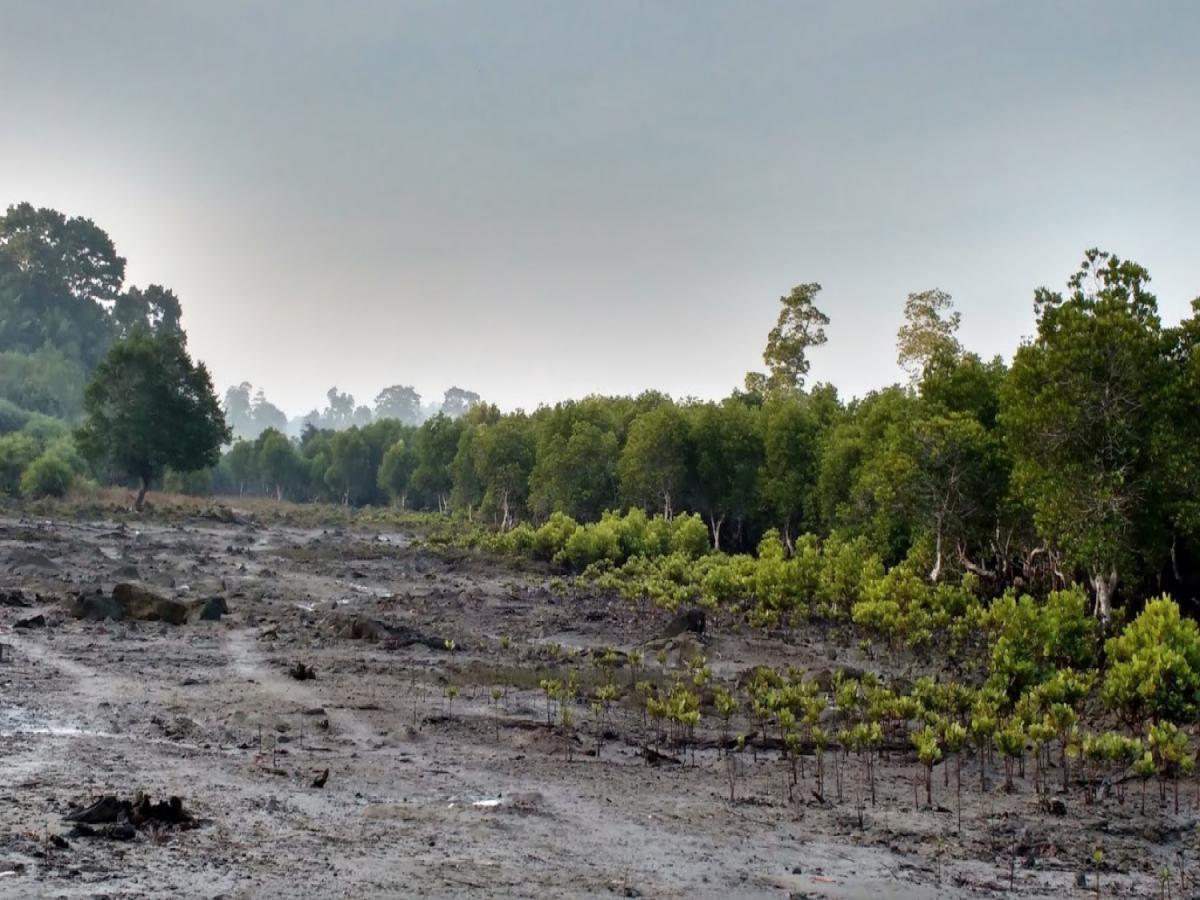
MGNREGA as Social Protection
Social protection is broadly understood as measures to reduce poverty and vulnerability by reducing people's exposure to risks and enhance their capacity to manage those risks, including those associated with unemployment, exclusion, sickness, disability, and old age. 4 Social protection is defined as the set of policies and programs designed to reduce poverty and vulnerability by promoting efficient labor markets, diminishing people’s exposure to risks, and enhancing their capacity to protect themselves against hazards and interruption/loss of income. There is widespread agreement that social protection for the large part is the responsibility of the State. Extending such support to the poor and vulnerable is in fact a prominent part of the United Nations Sustainable Development Goals (SDGs). 5 Goal 1.3 is to implement nationally appropriate social protection systems for all, including floors. Social protection is to cover five major areas: (i) labour markets, (ii) social insurance, (iii) social assistance, (iv) micro and area-based schemes to protect communities and (v) child protection. Workfare programmes are a labour market intervention designed to offer a fallback option for workers when work is unavailable, while also implicitly enforcing a wage floor.
In the context of workfare as a part of a cluster of social protection interventions, it is useful to remember that countries such as Argentina, Mexico and Brazil, which are celebrated more for their cash transfer programmes, have frequently used workfare programmes in times of an economic downturn (Marshall, 2004). Indeed, there have been many instances of such use since 1997 even into the 2000s. It is not unusual for governments to turn to workfare programmes to cushion the impact of macroeconomic and climatic shocks that tend to affect the poor disproportionately and in large numbers.
[T]here is a serious problem with what constitutes admissible evidence amongst a segment of economists, some of whom have had significant power and connections to influence the course of the programme.
For example, in 1996-97, amidst economic distress, Argentina’s unemployment climbed to 18% and unemployment reached 39% among the poorest decile. In 1997, the Argentinian government responded by introducing a wage for work programme with World Bank assistance (Trabajar II), which provided temporary work for those who sought it, at relatively low wages – set at around the average earnings of the poorest 10%. The government thereby successfully provided employment and increased incomes by 22 to 25% on average for all participants with the poorest benefitting the most (Jalan and Ravallian, 1999, for example). When the economy recovered, many found regular work and returned to jobs that they preferred.
Workfare programmes have the advantage of being self-targetting, because in both the nature of work and the relatively low wages paid, only those who are poor and presumably have few alternatives participate in them (Subbarao, 2003). They aid in poverty alleviation but more crucially serve to enforce a wage floor and act as a counter-cyclical policy intervention during times of economic distress. There is thus a clear normative rationale for workfare programmes; they are perhaps more commonly used than we are willing to admit.
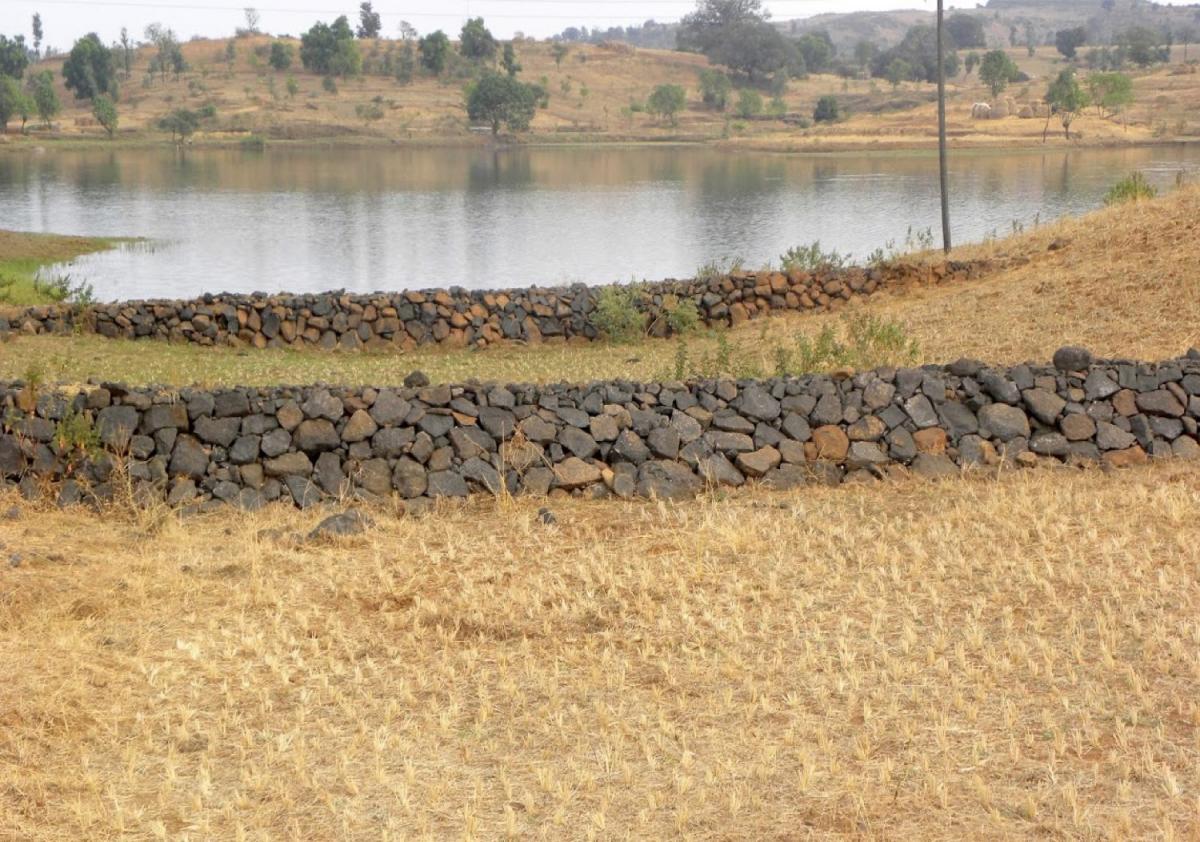
There is an emerging argument that pits workfare programmes against Universal Basic Incomes (UBI). In particular, some envision UBI schemes as replacing government expenditure on social protection schemes. Some have suggested that given the implementation issues of MGNREGA, a UBI would be better as a poverty alleviation tool (Alik-Lagrange and Ravallion, 2018; Ravallion, 2019). Equally, there are many critiques that suggest that the two serve distinct purposes. While UBI assures a basic income, it is not clear that it will achieve the kind of impacts that workfare programmes are intended to – for example, act as a wage floor and create useful public assets (Alik Lagrange and Ravallion, 2018; Ravallion, 2019). Others see instead an opportunity to couple MGNREGA with a UBI, maintaining MGNREGA for the specific goals it addresses (Ghatak, 2019).
MGNREGA’s Achievements and Failures
While the theoretical rationale is widely accepted, the proof of the pudding, as they say, is in its eating. In its 14 years of operation, the MGNREGA has accomplished a great deal, especially from the perspective of addressing deprivation.
I would like to dwell here on the role of research. Even in the early days of its implementation, there was a call to academics by activists to research the working of MGNREGA. Today, there is a large body of research on MGNREGA and happily academic research has played a key role in dispelling many of the myths around the perceived negative impacts of the programme. Whereas in 2009, the World Bank called MGNREGA a “barrier to development”, in 2014 the World Bank lauded it as a “stellar example” of rural development. This volte face is primarily on account of the growing evidence of the positive impacts of MGNREGA.
One differently-abled, elderly worker in Tamil Nadu told us that there is never a day when he does not show up at the worksite because he enjoyed working together with people and valued the ability to earn.
At the same time, there is a serious problem with what constitutes admissible evidence amongst a segment of economists, some of whom have had significant power and connections to influence the course of the programme. One researcher, for example, lamented that since MGNREGA had not been randomised the consequence has been that we are left with studies that don’t credibly identify causal relationships. A 2016 paper titled “India’s National Rural Employment Guarantee Scheme: What Do We Really Know about the World’s Largest Workfare Program?” (emphasis added) illustrates this problem well (Sukhtankar, 2016). After outlining what counts as credible research and the importance of causal inference, the author of this paper proceeds to review a highly selective set of studies that he deemed to make the cut. Only a few of these assessed the programme with respect to its stated goals and none of these accorded any agency or voice to the MGNREGA workers themselves. It seems that academic work on MGNREGA is not immune to what Akerlof (2018) has called Sins of Omission, wherein researchers choose to study topics that methodologically measure up to what is `Hard’, at the expense of what might be truly `Important’. 6 See Khera (2019) for a discussion on this in the context of India.
Indeed, there are been no dearth of papers linking MGNREGA to all kinds of outcomes, including schooling of young children, schooling of older children, dropout rates, reduction of factory labour, urbanisation, manufacturing productivity, domestic violence, Maoist conflict, violence in Kashmir, infant mortality, crop residue burning and long-term nutritional status. Some of these include cases where households report as low as nine days of MGNREGA work in a year. Many of these studies deserve closer scrutiny, since despite the “rigour” of economic analysis, it seems quite strange that such impacts would materialise for the wages the MGNREGA pays and the number of days of work provided.
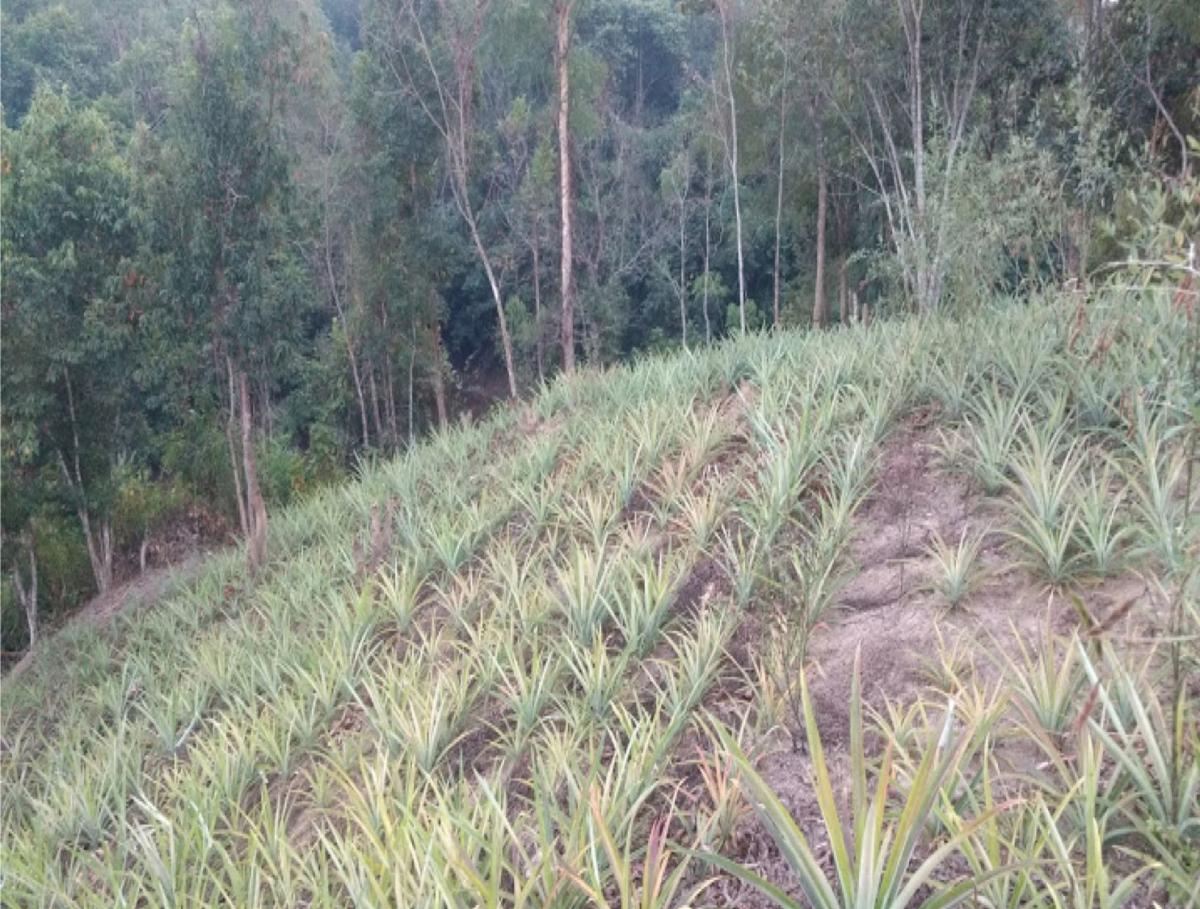
To truly understand the work of MGNREGA relative to its objectives and its implications in addressing deprivation, we need to accord a significant role to worker testimonies and studies that seek to convey them. The evidence I present in this essay therefore has fewer methodological filters.
Reach, Benefit, Empower
In judging the impacts of interventions, one can distinguish three types of programmatic engagement – reach, benefits and empowerment (Theis & Meinzen Dick, 2016). The first asks if the programme reaches the intended beneficiaries. Are they included? The second asks if the programme benefits them, i.e., increases their wellbeing (especially in material terms). Inclusion can often be notional and we care about whether the intended benefits of the programme accrue to the intended beneficiaries. The third goes beyond to ask if the programme has been transformative. Does it empower the beneficiaries, i.e., strengthen their ability to make strategic life choices and to put those choices into action? It is worth recalling that MGNREGA’s objectives include some elements of empowerment of the marginalised.
If one focuses on reach, MGNREGA has done creditably in including those that need it most. In rural India, according to data from the National Sample Survey (NSS), in 2011-12, 23.2% of rural households with adult members had worked at least once in MGNREGA in the year preceding the survey, down marginally from 24.4% in 2009-10. 7 The official estimate of the number of beneficiaries was already discussed in the introduction, the figures from the NSS present estimates based on household surveys. The National Sample Surveys (NSS) are periodic surveys conducted across India on household consumption expenditure. Quinquennial rounds (called “thick”) are complemented by annual rounds (called “thin” rounds) and special purpose surveys. The NSS 68th Round (July 2011 - June 2012) and the NSS 66th Round (July 2009 - June 2010) surveys include schedules on Employment and Unemployment and Household Consumer Expenditure. These surveys include information on 281,237 individuals in 2009-10 and 280,763 in 2011-12 belonging to the survey households. It has been pro-poor in the sense that those households with a lower per capita monthly expenditure have disproportionately higher rates of participation. Administrative rationing has been an issue, i.e., there continues to be unmet demand for work. It seems, however, that such rationing does not explicitly discriminate against the poor relative to the non-poor. That said, there is a view that states with a larger number of poor, such as Bihar, have on average utilised far less funds for MGNREGA than the states with fewer numbers of poor, such as Tamil Nadu (Saxena, 2016).
Dalits and adivasi participation in MGNREGA has been consistently high (Figure 1) since the inception of the programme; they also tend to have little land. As for women, MGNREGA like the EGS of Maharashtra has been called a women’s programme because a large number of women work on the programme. This is in no small measure due to specific features in the Act. First, the Act prescribes that at least a third of all workers must be women. Second, since the entitlement to at least 100 days of work is at the household level, the allocation of the work is left to the household members, allowing space for the participation of women (Khera and Nayak 2009).
Data at the country level suggests that a majority of workers on MGNREGA sites are women, accounting consistently for around 52% on average since inception. These rates have been fairly stable over time and much higher than the mandated one-third. In states such as Tamil Nadu, Kerala, Rajasthan and Andhra Pradesh and Telangana, it is well above the national average (Narayanan and Das, 2014).
The proportion of women in the total rural workforce is 34.9% according to the Census of 2011; their representation in the MGNREGA workforce is 52% on average for 2010-12 suggesting that the programme is drawing more women than men to its worksites. In 2011-12, as per the NSS data, at the All-India level in 20% of the rural households who worked on MGNREGA only the female member participated, indicating that MGNREGA provides a household level entitlement that allows women to take advantage of the opportunity.
[A] dispassionate assessment of MGNREGA is that it has been very effective in generating work, increasing incomes and consumption expenditure, filling an important need for rural adults during the lean season.
A number of reasons have been identified for women preferring to work in MGNREGA. The wages typically exceed what women get in private work (especially on farm or in unskilled non-farm work). This attracts women to MGNREGA sites. For many men, the wages are lower than what they can earn outside and tend to prefer the latter. However, apart from this, the proximity to worksites is another important factor. In many areas, in states such as Telangana, Andhra Pradesh and Tamil Nadu, women work on MGNREGA sites in the morning and tend to their own farms in the evening. In the absence of MGNREGA, they would not have worked at all because no work is available, or they would have to work a full day outside the village. This is also an attractive feature for women.
Several states have used MGNREGA to provide work for the differently abled and the elderly. In the initial years, only a few states had specific guidelines in place, but soon many states followed. These include states such as Madhya Pradesh, Rajasthan, Tripura, Telangana, Andhra Pradesh, Tamil Nadu, and West Bengal.
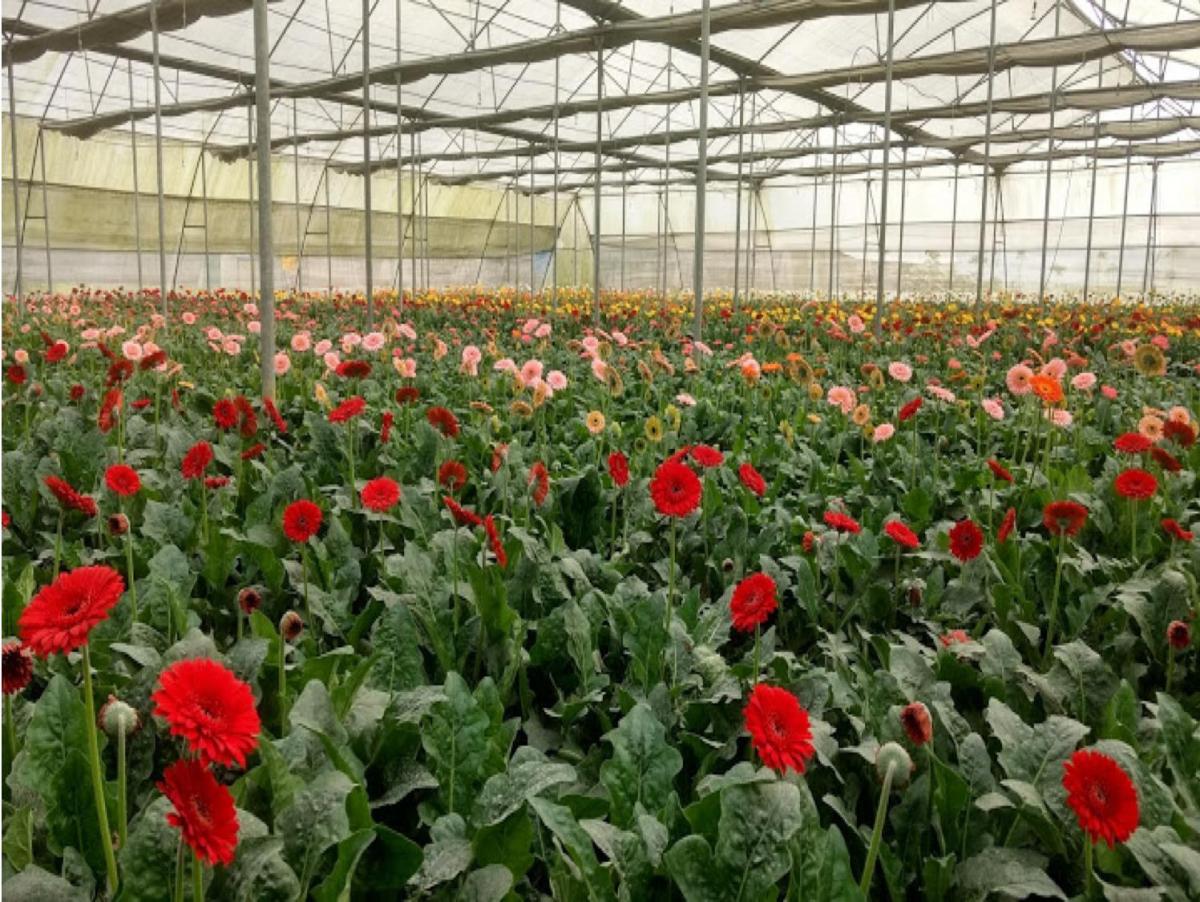
In my own experience visiting field sites, differently-abled workers are assigned tasks appropriate for their capacity. Even in 2010 the Central Employment Guarantee Council (CEGC) observed that several states had evolved specifically for different kinds of abilities. Activities such as drinking water arrangements, looking after children, irrigation canal digging, earth backfilling, sprinkling water on newly built walls, filling sand and pebbles in pans etc., have been suggested to the differently abled persons (CEGC, 2010). Some states have conducted detailed time and motion studies to design work for this particularly vulnerable group. It is hard to overstate the transformative impact of such opportunities for both the disabled and the elderly, especially when in most states, pensions and support for the disabled remain pitifully low. One differently-abled, elderly worker in Tamil Nadu told us that there is never a day when he does not show up at the worksite because he enjoyed working together with people and valued the ability to earn. He otherwise had few opportunities to do so.
In terms of benefits, a dispassionate assessment of MGNREGA is that it has been very effective in generating work, increasing incomes and consumption expenditure, filling an important need for rural adults during the lean season and in times of shocks and especially so for the dalits and adivasis (Klonner and Oldiges, 2019; Deininger & Liu, 2019, 2013; Engler and Ravi, 2015; Imbert and Papp, 2015 to name a few)
The findings on migration suggest that MGNREGA deters short-term distress migration (in some cases by 22%) but not long-term migration (Das 2015, Imbert and Papp 2019, Ambasta, 2015), indicating that MGNREGA was a safety net without perhaps influencing the larger process of structural transformation. This is critical because distress migration undermines their position in the labour market and can disrupt the lives of children in these families. 8 For a review of the impacts of the MGNREGA on women and children, see Mani (2016). In our interviews with local functionaries in many states across the country, when asked to define the objective of MGNREGA, many perceive the main objective to be stopping seasonal migration (by providing 100 days of work.
A number of field surveys emphasise the importance of these earnings to workers – helping them to avoid hunger, cope with illness, avoid migration, send children to school and avoid hazardous or demeaning work (Drèze & Khera, 2009; Chhabra, et al 2009).
The impacts of MGNREGA on wages are modest and rather than “wrecking the national labour market” seem to “lift all boats”.
In a study from worksites in Tamil Nadu in 2008, covering 102 women, it was evident that the wages women earned as MGNREGA workers enabled them to accomplish a number of things, ranging from paying their debts or retrieving pawned gold to spending on children’s health and education or saving in chit funds, apart from meeting day-to-day household expenses. One woman used her wages to work her fallow land, and another bought insurance for her children. The fact that most of the women interviewed either kept the wages they earned (51%) or shared them with their husbands (19%) possibly indicates one kind of independence. Many women also state (in qualitative studies) that there is a willingness to lend a woman money if the woman has a job card since it signals paying capacity – so the credit worthiness of MGNREGA women workers is often higher than others who don’t work in the programme.
Studies have also shown that MGNREGA helped improve food intake and nutrition, and health status. There is now evidence from a number of contexts — Maharashtra, Rajasthan and Andhra Pradesh — that show that calorie and nutrient intakes have increased and prevalence of hunger may have reduced as a result of the programme (See Narayanan and Gerber, 2017 for a review of the evidence; Joshi and Kumar, 2013).
Another apparent benefit has been financial inclusion. In 2009, when it was mandated that wage payments be routed through banks/post offices, this did put heavy pressure on the banking system and resulted in delays and inconvenience to workers, but it also connected workers to the formal banking system. An estimated 9 crore bank accounts and 2.3 crores post office were opened around this time. Relatedly, with individual workers getting paid directly into the accounts, women could now access their wages via their own bank accounts. A recent paper suggests that when women are trained to use these accounts, it seems to enhance their agency and power within the household and changes gendered norms regarding their work status, increasing acceptance of working women (Field, et al., 2016).
Beyond direct effects for participants, there are also what economists refer to as general equilibrium effects that benefit non-participants as well. Estimates from several studies suggest that consequent to the programme, rural wages increased by around 1-9% across demographic groups and regions, with benefits occurring mostly to the poorest and disadvantaged communities and in the slack season when agricultural work is unavailable. Five per cent can be attributed to the programme, an estimate that rises to 9% in the ‘star’ states (Imbert & Papp 2015). Some find a 3% increase in agricultural wage (Berg et al., 2012), with an 8% increase in female agricultural wages and 1% increase for men (Azam, 2012). Some find virtually no independent impacts of MGNREGA (Mahajan, 2015; Zimmerman, 2013). Others have found that when the implementation of MGNREGA improved, both wages and labour supplied increased (Muralidharan, et al 2017).
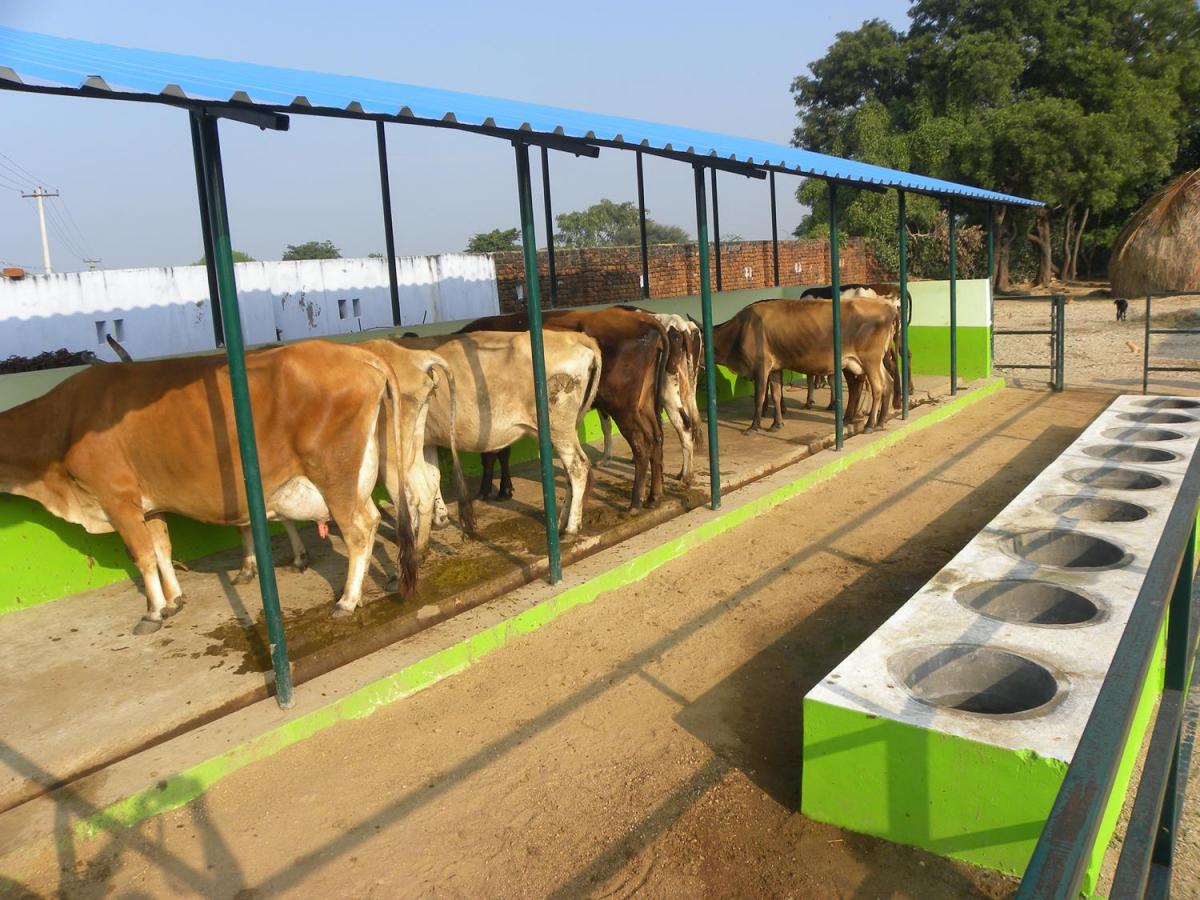
The impacts of MGNREGA on wages are modest and rather than “wrecking the national labour market” seem to “lift all boats”. This is apart from evidence that those who work on the programme are also able to command higher wages in private work (Li and Liu 2016) – presumably because there is a notion of a fair wage and also bargaining power when work is reliably provided. In this sense, MGNREGA wages do seem to implicitly enforce a wage floor.
The labour market impacts of MGNREGA often invoke strong, even alarmist reactions and the strongest argument against the programme is often made in the name of the farmer – that by pushing up wages it has squeesed the profits of farmers, whose livelihoods are already precarious. MGNREGA has indeed crowded out some labour supply to farms in some regions. There is some truth in this. Some researchers found that while on average there were significant income gains, the top quintile in rural areas is likely to have lost on account of the programme (Imbert and Papp, 2015). There has been a displacement of labour supply away from agriculture, pushing farmers to mechanisation in response (Bhargava, 2014).
The impacts on agriculture vary across contexts, depending on local wage rates and existing cropping patterns, etc. (Verma and Shah, 2018). In some other contexts, however, it is not so much that mechanisation is a consequence of MGNREGA; the direction of causality runs instead the other way. In Araria (Bihar) poorest district landless workers pointed out that since 2012, harvesting was increasingly being done using combine harvesters from the Punjab. Consequently, there was no longer work available: “if before half of us had work for half the season, now only a tenth have work for 10 days each”. Without MGNREGA, we don’t know what we would have done, said a worker.
Further, it is not often acknowledged, that many small and marginal farmers are themselves beneficiaries of MGNREGA. The 2012-13 survey Situation Assessment Survey of Agricultural Households noted that 44% of the agricultural households had job cards, and 7% of farmers worked on MGNREGA as the primary activity in the lean season. In neighbouring Madhya Pradesh, in an ongoing study of young farmers, we found that most farmers turned to MGNREGA when they did not have water for a second crop. In recent years, however, MGNREGA works were hardly available, they said.
There is also substantial evidence that the MGNREGA works can create positive feedback into agriculture.
It is no surprise that farmers who collectively marched in Delhi as part of the historic Kisan Mukti March in Delhi in November 2018 had MGNREGA feature prominently on their list of demands, not as a problem but as a solution. They demanded that the Government “Increase the number of guaranteed employment days under MGNREGS to 200 days per family, ensure wage payment at par with legal minimum wages for unskilled farm labour and extend this scheme to urban areas”. 9 All India Kisan Sangharsh Coordination Committee (AIKSCC) on the occasion of the historic Kisan Mukti March in Delhi, 29-30 November 2018.
There is also substantial evidence that the MGNREGA works can create positive feedback into agriculture. In 2011, the World Bank (2011) observed that "the objective of asset creation runs a very distant second to the primary objective of employment generation". And, field reports of poor asset quality indicate that [the spillover benefits from assets created] is unlikely to have made itself felt just yet." This was possibly true of the early years, when the focus was still on getting the implementation architecture set up. Since then much of the available evidence today suggests that many of the MGNREGA works have been useful and indeed even supportive of agriculture.
A survey we conducted in Maharashtra of households who benefitted and worked on MGNREGA showed that 96% of those who benefitted from works on private land identified themselves as farmers. For example, in Chhindwara (Madhya Pradesh), a young woman took advantage of a state government scheme called Kapildhara, under MGNREGA, to construct a well on her father-in-law’s land. People then suggested she sow maize and wheat, now that the farm had access to water. She then saved enough to install a motor for the well. “That is when”, she said, “I started farming and stopped migrating.”
Both Bhaskar and Yadav (2015) and Agarwal et. al. (2012) find that Jharkhand's MGNREGA wells had impressive rates of return of 6% and 2.29-4.09%, respectively. A set of Tata-IWMI (International Water Management Institute) studies reported in Verma and Shah (2018) documenting best examples of 140 MNREGA water-related assets in 75 villages in Bihar, Gujarat, Kerala and Rajasthan, suggest that for a majority of assets, cost recovery is within a year of completion of works. Additional water consequently available for protective irrigation led to saving of diesel costs. Many water works helped groundwater recharge and supported pisciculture.
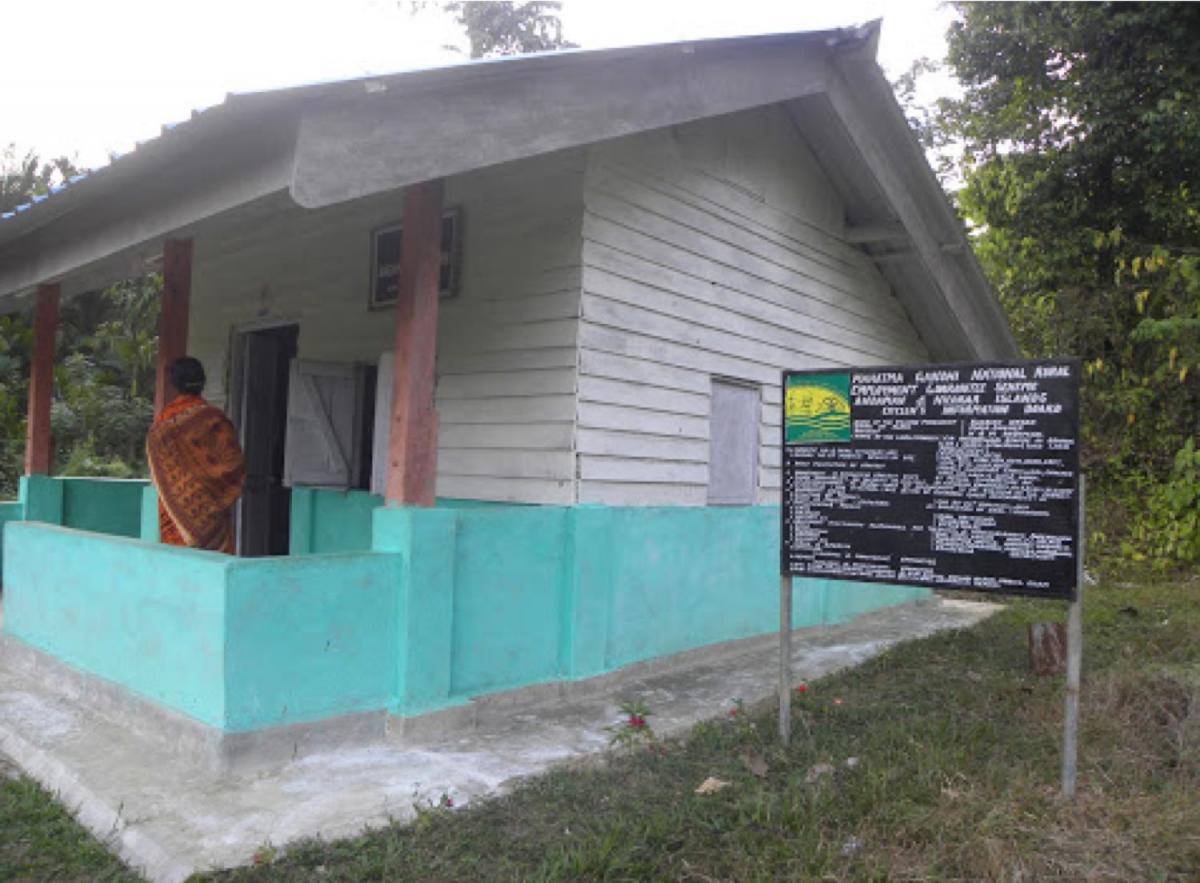
An IISc (Indian Institute of Science) study (2011) and Tiwari et al. (2013) using rapid scientific measures, and Esteves et al. (2013) found that MGNREGA assets they studied reduced the vulnerability of agricultural production, water resources and livelihoods to uncertain rainfall, water scarcity and poor soil fertility. A survey of 2,000 households in 40 villages in Andhra Pradesh, Rajasthan, Madhya Pradesh and Karnataka quantifies clear benefits in terms of reduced soil erosion, increased water availability, groundwater recharge and biomass (IISc, 2011). In a survey of perceptions of users of 4,100 assets in 100 villages in 20 districts in Maharashtra, farmers consistently viewed water conservation and harvesting works as enabling diversification of crop production for the market, maintaining livestock, and expanding area under irrigation and cultivation (Ranaware, et al 2015).
In broad terms, there is evidence suggesting a rejuvenation of agriculture through increased cropping intensity, area expansion, and the growing of more commercial crops (Deininger, et al, 2016; Gehrke, 2016). The MGNREGA assets have contributed to building resilience and reducing farmer vulnerability as well (see for example, Fisher 2019 for Himachal Pradesh; Esteves, et al, 2013 for several other states) and in the management of natural disasters. 10 For a broader case for the potential of workfare programmes to address nature-based climate action, see Norton, et al. (2020).
This is not to suggest that across the country MGNREGA is always creating useful and durable assets. In several places assets are of poor quality since they have been designed and executed poorly. Inadequate staff strength and insufficient attention to technical design issues continue to undermine the programme in many states (Shrivastava 2015, Ambasta et al. 2008). Furthermore, with the expansion of the type of permissible works, in recent years there has been a proliferation of toilets and pucca structures – seva kendras and houses under various housing schemes that don’t necessarily service the goal of supporting livelihoods explicitly. At the same time, this is a far cry from the notion that MGNREGA is for digging holes. Illegal use of machinery rather than labour has also been reported from some places.
MGNREGA has certainly helped workers and civil society organisations galvanise action and mobilise around work-related issues.
Moving beyond benefits, has MGNREGA been transformative and empowering? Empowerment is hard to measure, but testimonies from field surveys support the idea that MGNREGA has been inclusive and empowering of women (Jandu 2008; Pankaj and Tankha 2009; Dheeraja and Rao 2010; Sudarshan 2011). Many women mention that the dignity associated with work especially for destitute single women is an important aspect of MGNREGA.
We also have several instances where MGNREGA has played a significant role in denting historical class imbalances.
In northern Bihar, workers told us that MGNREGA enabled them to gain a little bit of independence from ties with the landlord that had continued for generations. It was not without backlash, however, and the incensed landlords often tried to evict them from their land, even burning a few huts on occasion. In Vengur (Tamil Nadu) in 2008, MGNREGA workers explained to us that until MGNREGA came, they were largely at the mercy of the landlord, who was steadily encroaching on to their homes and land. They were helpless since they depended on him for employment. With MGNREGA, they felt able to push back against such encroachment. In Baran (Rajasthan), among the Sahariyas, bonded labour was pervasive and women in particular were often subject to abuse. Such bondage straddled generations. Community workers and activists leveraged MGNREGA (along the food entitlement) to support and rehabilitate many of these labourers. These are just a few illustrative stories of many such cases across the country.
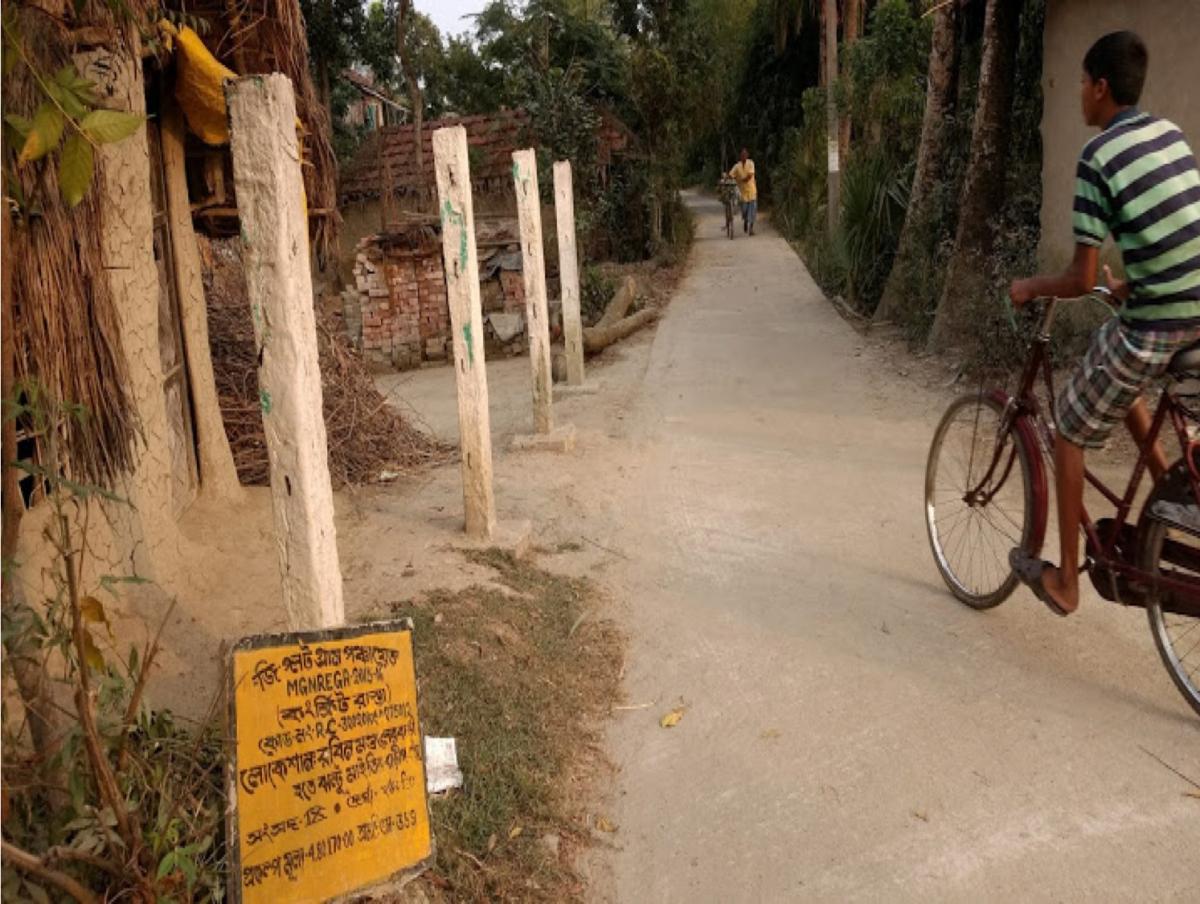
December 2016 | Sudha Narayanan
Admittedly, these are hard to quantify or assess with methods that rule the day in economics research. Yet, in terms of the goals of MGNREGA, these are perhaps the most powerful impacts. A collapse or retreat of MGNREGA could reverse these hard-won gains. In highlighting these aspects of MGNREGA, journalists can and have done a better job than academics.
The Possibility of Transformative Politics
Even in the story of how MGNREGA came to be, many recognise that it was a product of a democratic struggle that represented and unified the voices of workers (Khera, 2013; Chopra, 2011). As Drèze (2019) wrote: MGNREGA “is a pro-worker law implemented by an anti-worker system – a system pervaded by indifference if not hostility towards marginalised people in general and rural workers in particular.” (pg 144). This naturally leads to many challenges in implementation with vested interests working against any features in the scheme that enables empowerment of the worker-citizen. These tensions are apparent in conversations with local functionaries, especially in states that do not have a rigid top down approach to implementation. These functionaries often walk a tight rope. In Maharashtra, one functionary described the pushback they receive from local landlords and contractors saying “narega karega to marega“. He added that because of pressure to implement the programme that comes from the top “nahi karega to bhi marega” [you are damned if you implement MGNREGA and doomed if you don’t].
In states that have effectively implemented MGNREGA, such as Andhra Pradesh, Telangana, Rajasthan and Madhya Pradesh via what is essentially a top-down approach, especially in the first two states, the strengthening of grassroot democracy and deepening these institutions may have perhaps been sacrificed, even if processes such as social audits, etc. are in place and are routinely undertaken. 11 Only a few states had a robust system of social audit in place, an important vehicle to ensure transparency and accountability, that was part of the programme design.
[T]he Government’s reluctance to view MGNREGA as an opportunity and explicitly include it in a broad-based strategy to tackle the current economic crisis and of climate-induced distress is puzzling.
Several political scientists have studied MGNREGA, seeing it as an important shift towards post-clientelist politics, “a system in which a government’s performance in delivering impartially on the ruling party’s stated objectives, and ensuring more effective mechanisms to hold appointed officials accountable, would increasingly influence its political fortunes” (Manor and Jenkins, 2017, p 14). While researchers agree that this is not fully correct, and there is still evidence of clientelism and preferential resource /job allocations, as Manor and Jenkins, 2017 point out, MGNREGA nevertheless provides “institutional means to channel…discontent into a process of continuous democratic struggle” (p 11).
MGNREGA has certainly helped workers and civil society organisations galvanise action and mobilise around work-related issues. Several excellent examples of these exist, indeed there are too many to name. It is hard to think of another social welfare programme that admits such possibilities.
In 2009, Jairam Ramesh, the then Minister for Rural Development, pointed out that MGNREGA essentially posed an impossible trilemma. He noted that the three goals of creating employment, durable assets and local self-government are hard to achieve at the same time, and in his view no state had managed to achieve all three. To some extent, this might well be the case.
What not to do to MGNREGA: Some cautionary notes
A number of issues plague MGNREGA’s functioning today. There is continuing evidence that supply side constraints in the form of administrative rationing (where not everyone who seeks work in fact obtains work) and delays in wage payments and compensation for these delays discourage workers from seeking work (Desai, et al., 2015; Narayanan, et al 2016, Himanshu, et al, 2015; Drèze and Khera, 2014). These erode the ability of the programme to serve as a credible safety net.
Payment delays on the one hand come from the migration to an electronic fund flow system, the National Electronic Fund Management System (NeFMS) , which pays wages directly into the workers’ accounts. In principle, this ought to both reduce leakage and enable faster transfers, that is if such funds are made available in the first place. The forced transition to Aadhar -based payments has unleashed chaos in the system. Mapping workers’ Aadhar numbers to the wrong bank accounts, technical problems with servers and connectivity are just a few examples of problems discovered in various studies. A recent Indian School of Business study in Jharkhand, for example, suggests that Aadhar-linked wages to workers under MGNREGA often ended up in the bank accounts of others. Workers are typically left to their own devices to track and retrieve the money. In reality therefore, the imposition of technologies from above, functions like a “digital trap” (Bedi, 2019).
Even when the workers receive wages, MGNREGA wages remain pitifully low, set even below the legal minimum wage, a point repeatedly made by several activists and researchers. As per the recent PLFS, market wages for men were 74% higher than MGNERGA wages and those for women were 21% higher in 2017-18, suggesting room for increasing MGNREGA wages. In Parliament the Government has made it clear that there is no plan to revise the base MGNREGA wages upward.
If the funds flow and payments system represent over-centralisation, the Government has influenced disproportionately the kind of assets that need to be prioritised.
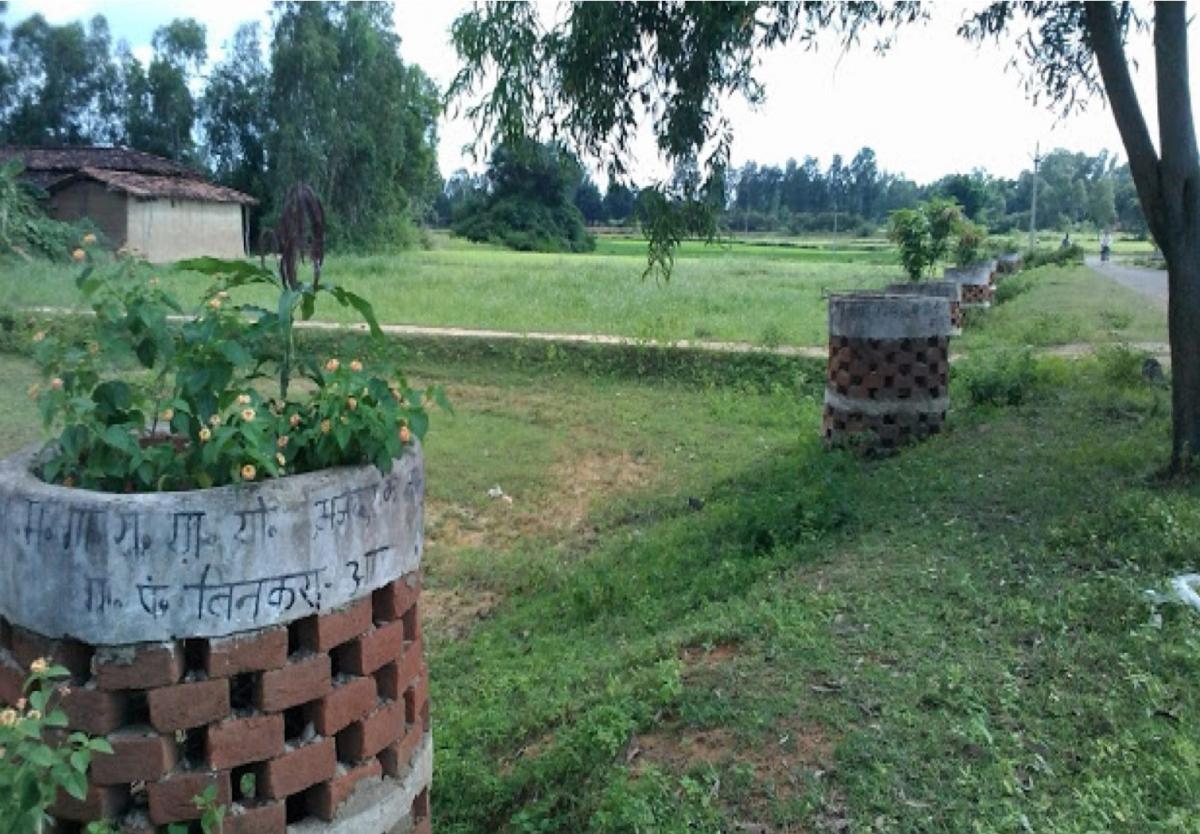
A recent example is of farm ponds. According to the Union Budget for 2017-18, the Centre expected to see one million farm ponds being built by March 2018. The Government in its wisdom decided to use MGNREGA to meet this target, which would have been welcome in many circumstances, except that in this case the Government suggested that these ponds should be 20 metres by 20 metres with a catchment area of 0.5 to 2 hectares of land depending on the rainfall in the area. This push has served the programme and its intended beneficiaries poorly. In Tripura for example, where farm ponds for rearing fish were very popular, during a field visit workers lamented that with the prescribed dimensions, farmers and communities were reluctant to part with that much land to construct farm ponds. The goals of these farm ponds are also misplaced, conceived as they are as surface storage for irrigation rather than as water conservation structures.
In states such as Madhya Pradesh, Rajasthan and undivided Andhra Pradesh that were shining examples of effective MGNREGA implementation in the early years, MGNREGA is largely used to fund other state priorities like housing (Pradhan Manti Awas Yojana) and toilets, which are material-intensive and generate little employment. This shift in composition of the type of assets is not necessarily apparent in aggregate data. This represents a sharp departure from investments on common lands towards private lands. MGNREGA was and can be effectively used as an instrument for investments in the commons and strengthening the natural resource base.
The tendency to influence the programme design is not new, and goes back the MGNREGA 2.0, that included well-meaning but misplaced interventions, that changed the essential complexion of the programme, undermining its very spirit.
Concluding Remarks
This article attempted to convey the transformative power of MGNREGA, particularly at a time of economic stress. A former senior bureaucrat likened MGNREGA to a diffused economic stimulus whose impacts will be apparent more when it is removed than when it is in place. The erosion of MGNREGA in recent years, might have well contributed in part to current rural distress.
To be clear, MGNREGA cannot substitute deeper and systemic efforts to generate jobs; nor can it address structural weaknesses in the economy. At the same time, the Government’s reluctance to view MGNREGA as an opportunity and explicitly include it in a broad-based strategy to tackle the current economic crisis and of climate-induced distress is puzzling, especially in the face of broad-based evidence on its effectiveness. The need of the hour is for the Government to place MGNREGA at the heart of its strategy to tackle this economic emergency. The Economic Survey of 2019-20 suggested that MGNREGA offers an early warning signal to detect rural distress. It is time the Government started treating it as an instrument to alleviate the consequences of rural distress. We can help by changing the narrative that has for too long maligned MGNREGA.
(This essay is based on the T.G. Narayanan Memorial Lecture, delivered by the author in Chennai at the Asian College of Journalism on January 24, 2020. The essay draws heavily on the authors’ published and unpublished research and writings since 2008. I thank Reetika Khera and P.S. Vijay Shankar for comments on an earlier draft.)


